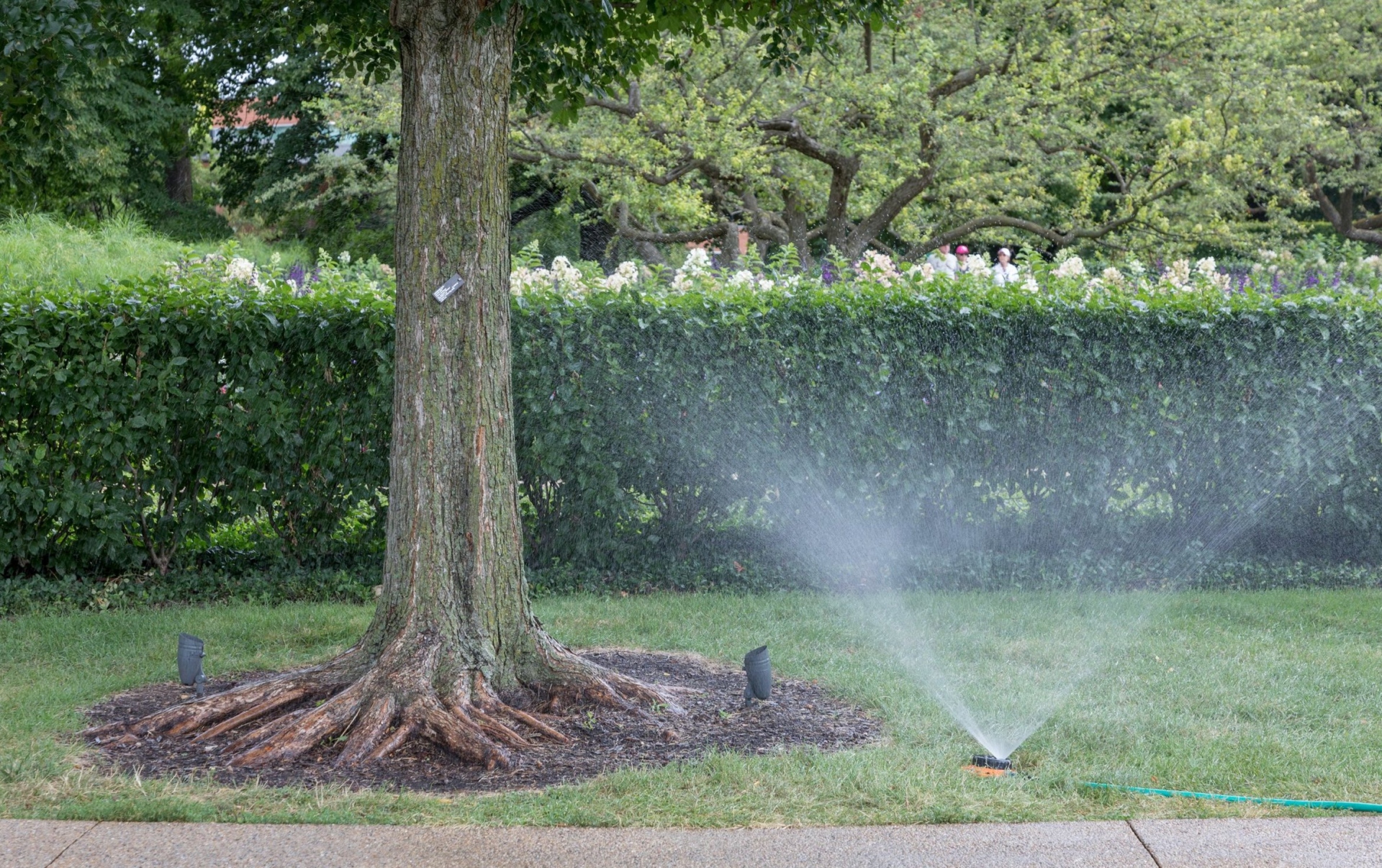Check the soil. To check the soil’s moisture, either use a soil probe or place your finger in the soil. If it is dry and hard, watering is appropriate. If there is some moisture, continue to monitor the soil’s moisture level.
Water weekly. Gardeners should continue to water plants weekly as needed. Prioritize watering needs. Start with newly planted trees or those planted within the last two to three weeks. Large established trees should be watered every two to three weeks in dry periods.
Don’t forget the trees on your parkway. During droughts, they need water too.
Water the roots. There is no reason to water the leaves of a plant. Water the soil, where the roots are. The Morton Arboretum recommends watering within the drip line of a tree, from the trunk out to the end of the branches, to reach the roots most effectively. The water-absorbing roots are within the top 2 feet of soil. The objective is to keep roots moist but not wet.
Avoid frequent light watering. Instead, water deeply at wider intervals such as once a week. Let a hose run slowly at the drip line of the tree, moving it around occasionally. At medium pressure it will take about five minutes to produce 10 gallons of water. If using a sprinkler system, place a straight-sided container under the sprinkler and water until it has filled 1 to 2 inches. If you deliver the equivalent of 1 to 2 inches of rain, the water will percolate into the soil about 6 inches, reaching the fine water-absorbing roots.
Keep checking in fall. Trees and shrubs, especially newly planted ones and evergreens, need ample water in their root systems as they go into winter. Continue to water as long as you can.
How and When to Water Drought-Sensitive Trees
Check on sensitive trees and shrubs. Drought-sensitive trees and plants that are likely to show the effects of reduced moisture include magnolias, Japanese maples, dogwoods, beeches, larches, tulip trees, and birches. Hydrangeas also suffer during dry weather because they’re shallow-rooted and therefore drought-sensitive.
How and When to Water Container Plants
Water container plants more frequently. Because there is little soil to hold water around their roots, container plants can dry out and wilt fairly easily. If plants are in full sun, they likely require more frequent watering than containers in shade.
How and When to Water New Plants
Check new plants and trees often. Newly planted trees, shrubs, and perennials are still establishing their root systems. Check the soil around their roots often to see if it has dried out. Plants should receive up to 1 inch of water weekly. Water both the root ball, right around trunk, and the surrounding area. Water deeply and then let the water soak in to encourage new roots to grow deeper into the soil.
Use watering bags for trees. When filled with water and placed by or around a tree trunk, these vessels will allow water to drip slowly into the soil around the roots. They are a good way to keep your younger tree well watered. Versions are available under several brand names.
How and When To Water Grass
Water trees first. During times of drought, trees should have priority over your lawn. Grass is easier to replace and will likely recover when rain returns. It will normally go dormant and turn brown during the hot months of summer and turn green again in fall. In times of severe drought, you may want to apply ¼ to ½ inch of water every two to four weeks. This will not green up the lawn, but it will keep the grass plants alive.
How to Spread Mulch
Spread mulch. A layer of organic mulch such as shredded bark or leaves insulates soil against extremes of temperature and holds in moisture. Apply mulch in a circle around trees and shrubs and in an even layer over garden beds. Spread mulch in an even layer 2 to 4 inches deep. Do not let it touch the trunk of a tree or the stems of shrubs.
